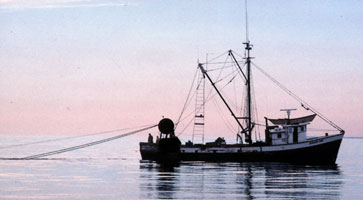3. Why are nekton important to the biological community of estuaries?
Why are nekton important to the biological communities of estuaries?
Estuaries are commonly nicknamed the "nurseries of the sea." The pelagic community is a large contributor to this nickname. Many species of fish and shellfish rely on the sheltered waters of estuaries as protected places to spawn. Other species use the estuary as a feeding ground. Nekton are abundant and provide food for other organisms. Hundreds of organisms depend on estuaries at some point during their development.
The pelagic community also serves as a source of energy and food for the benthic community. The benthic community relies on the bodies of animals that have died and particles of food that flow downward.
Fish are the most abundant nekton in estuaries. This fish population is very important to humans, both as a source of food and income. Estuaries provide essential habitat for most of America's commercial and recreational fish catch.

Trawler at sunset
(Click for larger image)
Fishing, tourism, and recreational boating depend on healthy and productive estuaries and provide millions of jobs for our nation. Commercial and sport fishing alone contribute billions yearly to the nation's economy. These industries are very important to many coastal communities, especially those close to fishing ports.
| 


